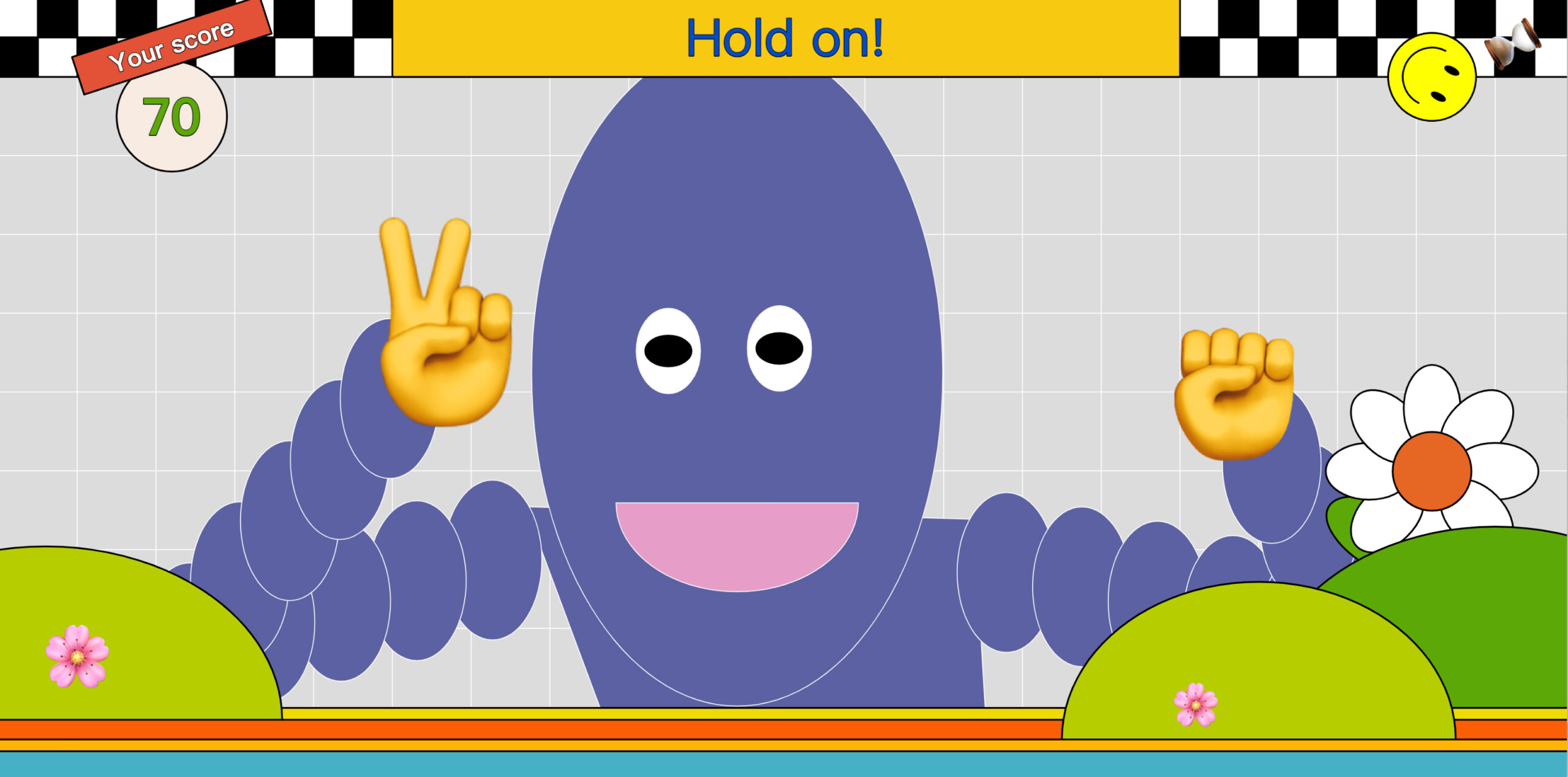
RELAX!
Relax is a fun little game meant to encourage people to get up and move. The equipment needed is a mobile phone and a display screen.
It uses PoseNet to estimate user’s real-time movement with camera on user’s mobile phone, and map the user’s gestures with avatar displayed on the screen to make fun animation, which is continually updated with the user’s live motion.

Project Background
Research shows that, under COVID epidemic, because of movement limitations, 35% of Australians have gained weight during the pandemic. During the epidemic, people’s fitness needs have attracted much attention, and the fitness industry is also actively seeking changes, technical means are constantly being used in this transformation. Some intelligent interactive devices are gradually being used by more people. For example, many companies have launched their smart fitness mirrors, but they are, without exception, very expensive. Therefore, software that may have similar functions will be more favored than expensive and bulky hardware devices.
Design Goal
Our concept seeks to provide people with a convenient and accessible way of contactless fitness. Staying healthy during a pandemic can help people manage stress while reducing their risk of contracting Covid. Therefore, what we want to do is to develop an APP that can be used only with a mobile phone and a computer to help people exercise.
With only ordinary electronic devices such as mobile phones and computers, people can exercise at home to stay healthy and relieve mental stress.

Be healthy
Supporting people to exercise
safely at home
Entertainment
Gamified design makes fitness fun
Relieve stress
Release negative emotions through exercise
Social contact
Supporting people to exercise
safely at home
Design Overview
“Relax” is a smart fitness assistance app where people will use avatars to exercise at home or anywhere else. But compared with traditional fitness apps, it is more like a game. Each fitness action of the user is set as a task. After completing the task, they will be rewarded with corresponding points. At the same time, the sound effect will also help to highlight this sense of the game. We want to give people the thrill of gaming in fitness. User can work out alone at home whenever they want or invite friends or family members to play together.

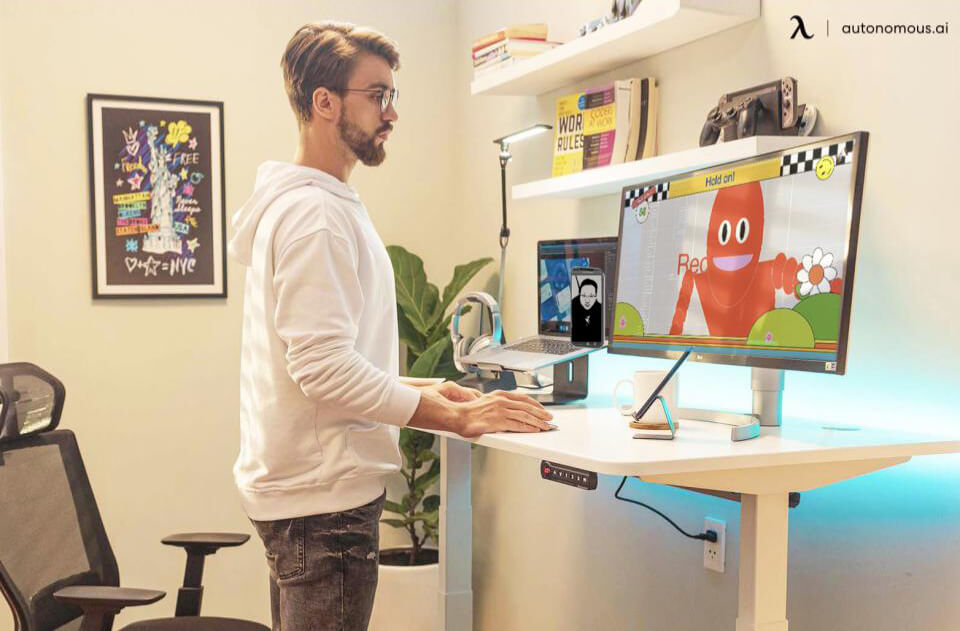
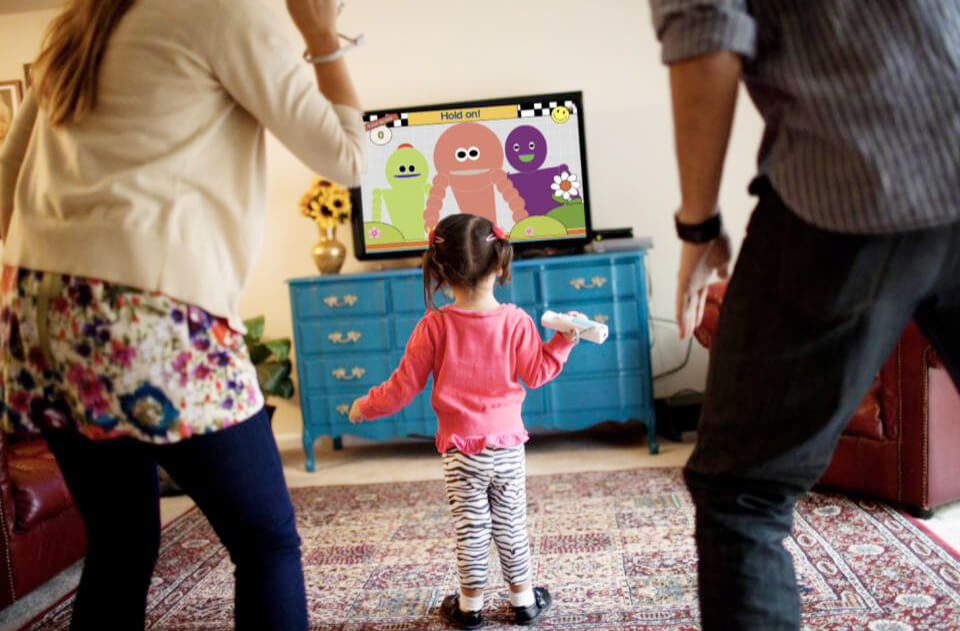
Design Method

Background Research
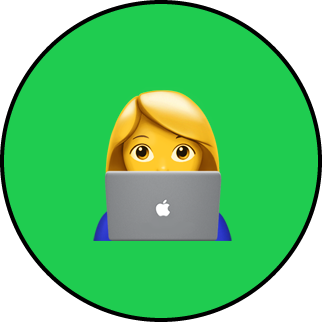
Brainstorm
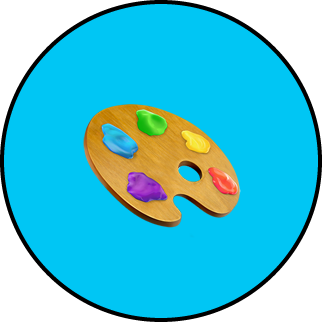
Sketch

User test
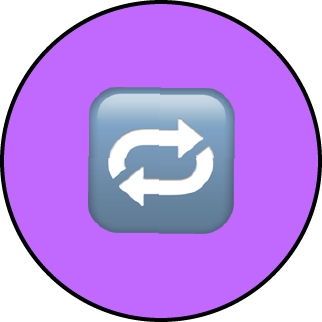
Iteration
Initial Concept

Client-side Feature: Pose Estimation
Server-side Feature: Multi-sensory stimulation to enrich the user experience
The user’s body will be displayed on the computer screen using an animated image, and the keypoints and skeleton of the virtual avatar is based on the live pose of user.
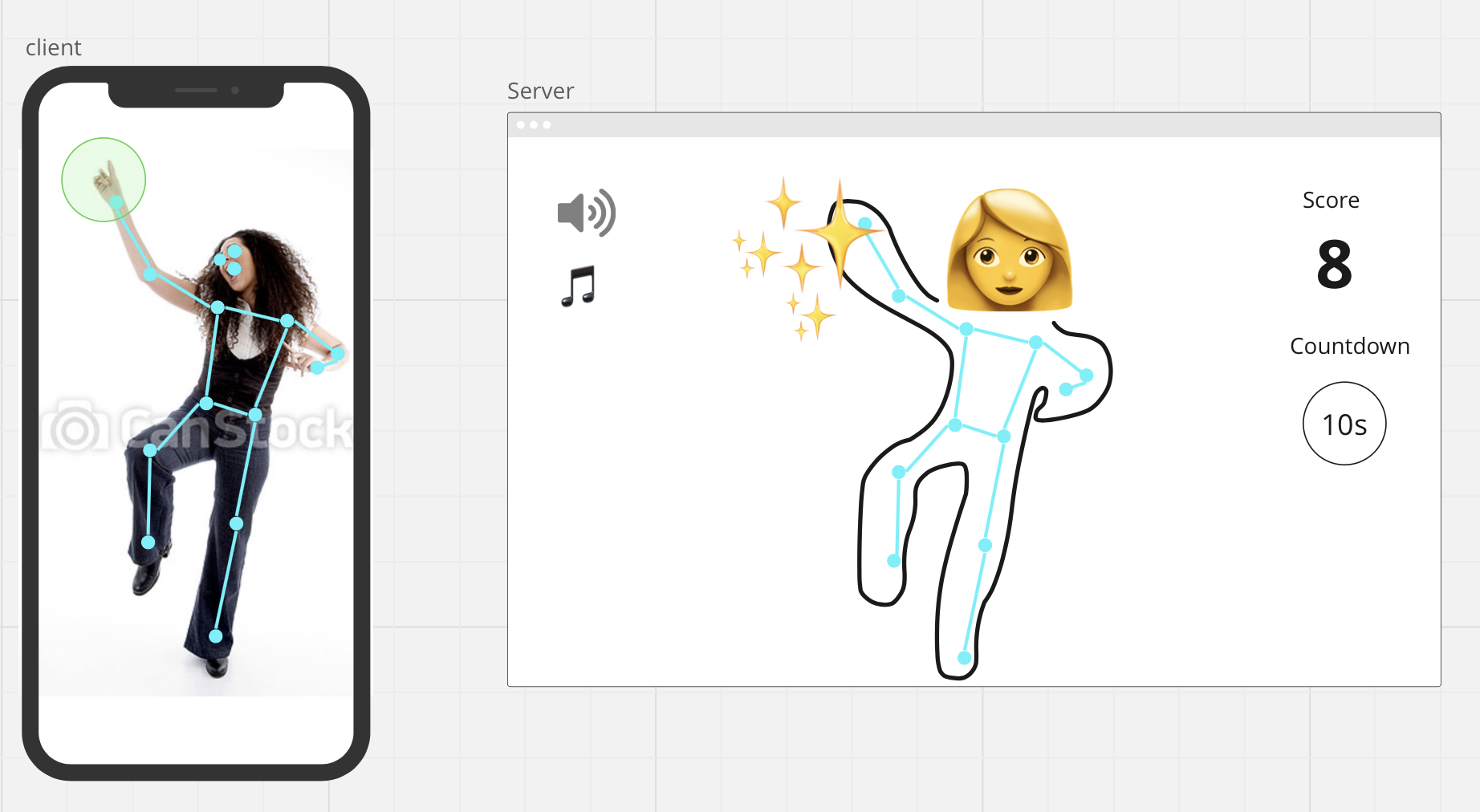
Client-side Feature: Target Zone Check
User can get one score if they move specific part of their body(e.g. left wrist) to the target zone, which will appear randomly on their phone.
Server-side Feature: Multi-sensory stimulation to enrich the user experience
The interface is designed with elements of uniform style. At the same time, encouraging words and game sound effects will be played when the mission is successful to enhance the uplifting mood.
Feedback from Course Corrodinator
- This is a camera-based motion capture game, which needs to ensure motion recognition accuracy
- It is better to have the environmental requirements in the user guide, such as the recommended distance from the mobile phone to the user.
- It is best to have a process of action teaching to ensure that the user starts the game after being ready, such as the phone is on stable place, or standing position is right, etc.
Design Iteration 1
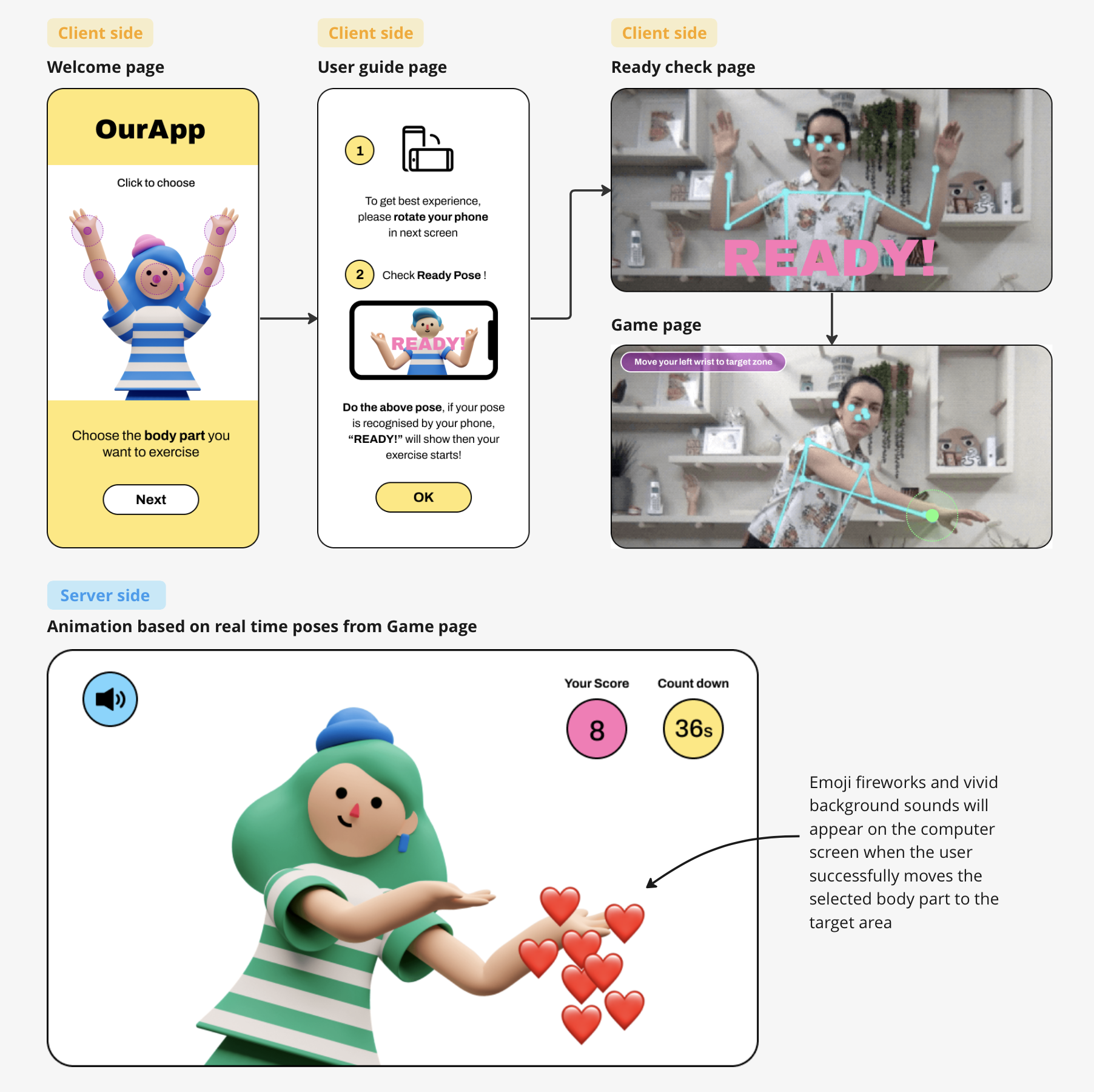
Improvements
- User could choose which body part their want to exercise
- User guide and pose check page is added
Issues
- The continuously changing target area keeps the user’s attention on the mobile side and has no time to pay attention to the animation on the computer side
- Due to the problem of data transmission, the movements of the virtual avatar on the computer are not accurate and sensitive enough.
Design Iteration 2
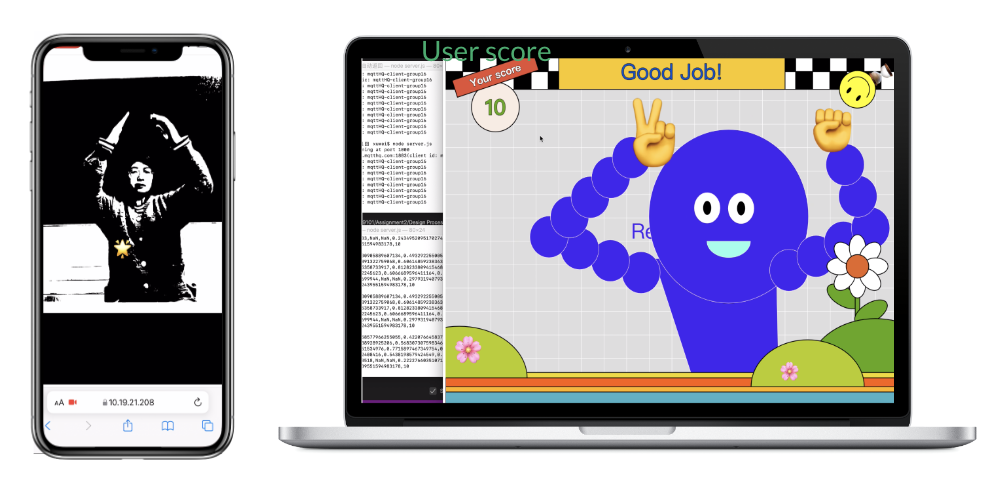
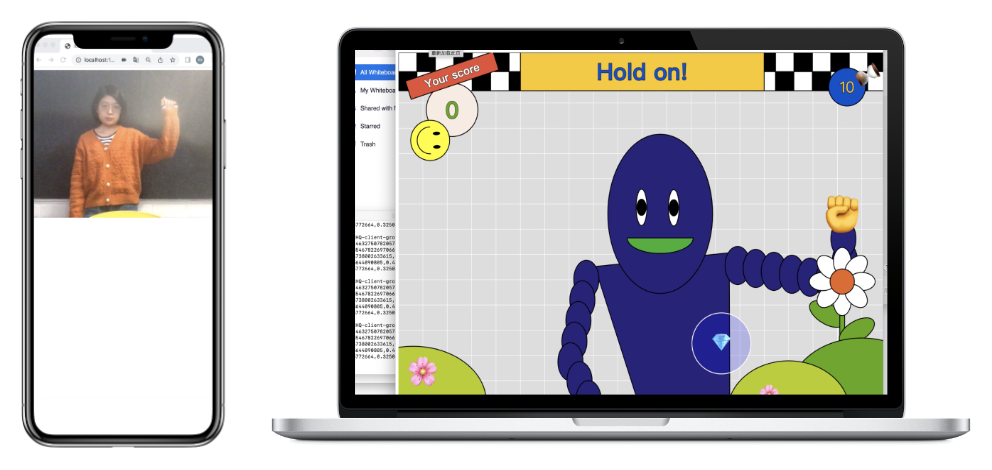
Concept A
Target emoji shows on the mobile phone screen
Improvements
- Considering that in some cases users are unwilling to appear directly in front of the camera, a lens filter function has been added
- The countdown function is cancelled and the target task is completed instead. When the user score reaches 100, the round of the game is over.
Concept B
Target emoji shows on the desktop screen
Improvements
- Target area is displayed with animation, user can playing the game while watching the animation.
- User have 10 times to try to reach the target area, when time decrease to 0, the game is over.
User Test
Feedback of Concept A
– Action recognition is more accurate
– Interesting, the rules of the game are well understood
– I like filters because I don’t like showing my face
– I would recommend it to my friends if it could be done well
Feedback of Concept B
– It can be used with only one device, which is very convenient
– I can’t always recognize my movements accurately
– I would be better if there will be background sound
Other Feedbacks
– There seems to be no sound effects
– The style of the picture doesn’t quite match
– Lack of user guidance after the game is over
– The feedback mechanism is somewhat simplistic
Final Concept
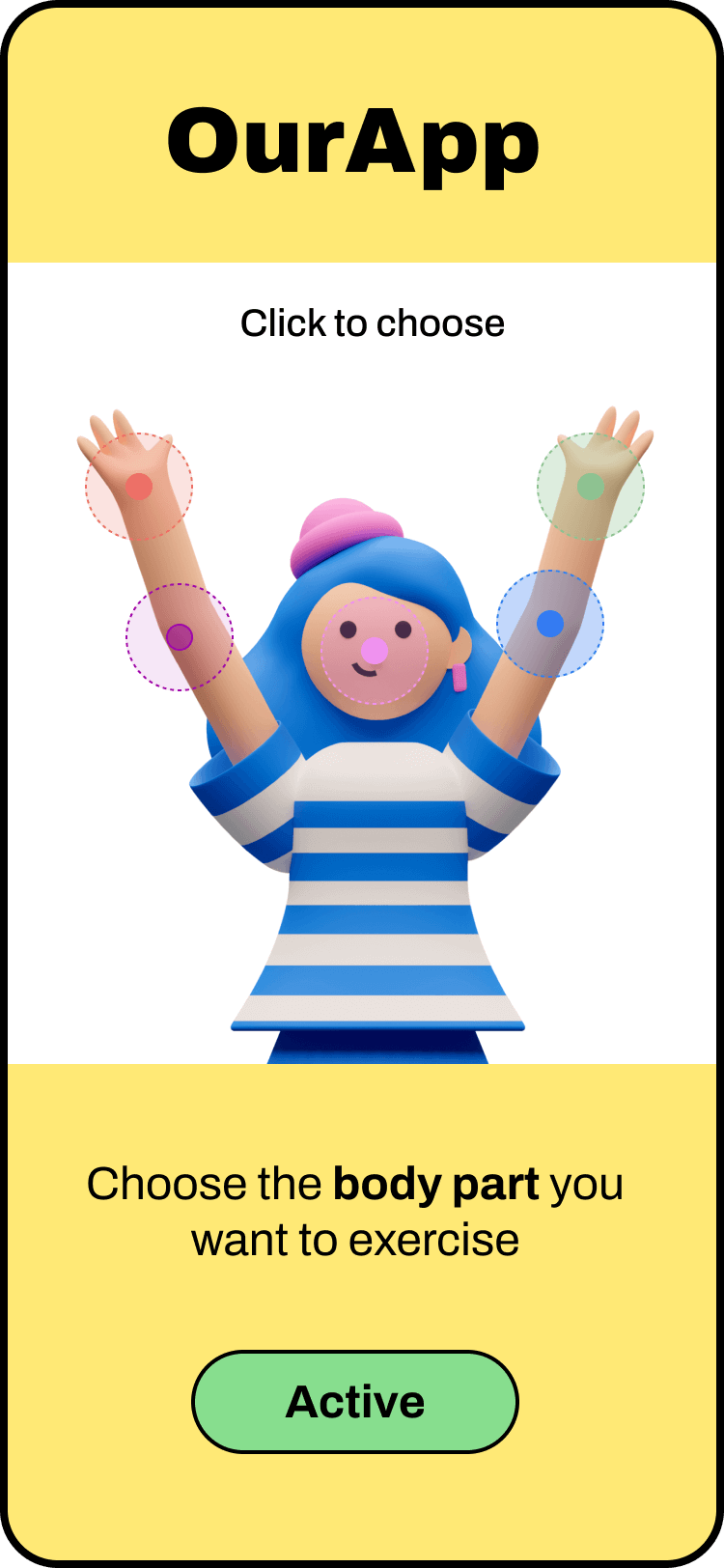
Welcome page
When user clicks one body part, the “Active” button will change to relative color to indicate the choice.
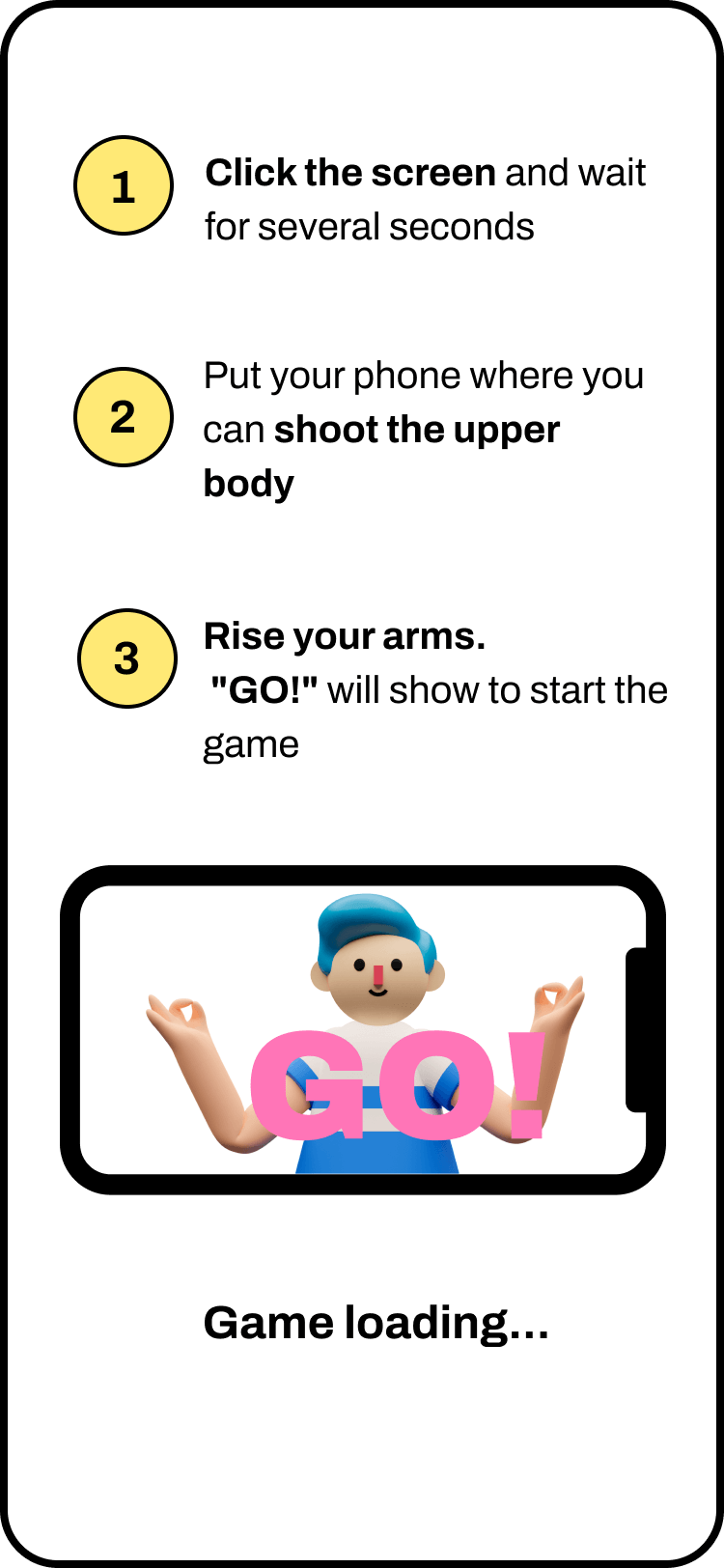
User guide page
In order for users to read our guide, after user clicking the screen, there is a 5s countdown. “Game Loading…” is added to instruct users to wait.
Ready check page
User completes the specific gesture, “GO!” will be displayed on screen. We use pose classification to ensure the user is at the right distance from the camera
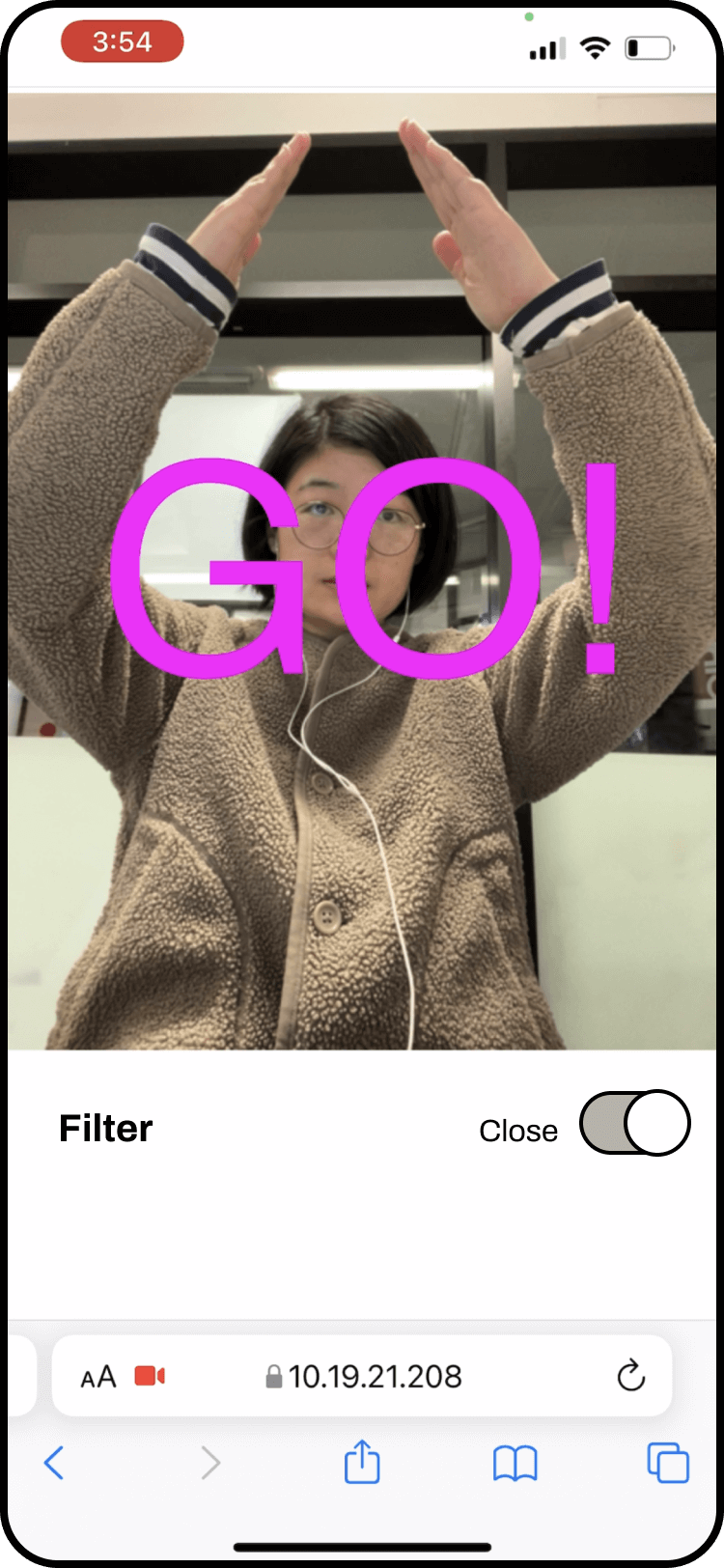
Game page
We found that some people had some negative emotions when they saw their face on the screen, so we added filters to the footage captured by the phone, user can turn it on/off according to their preference.

Outcome
Display
* There is a delay in data transmission between the mobile phone and the computer


Unit: IDEA Lab 9101 Software Development: Wei Xu & Yichun Sun Report Editting: Jialin Li & Honghao Zhang